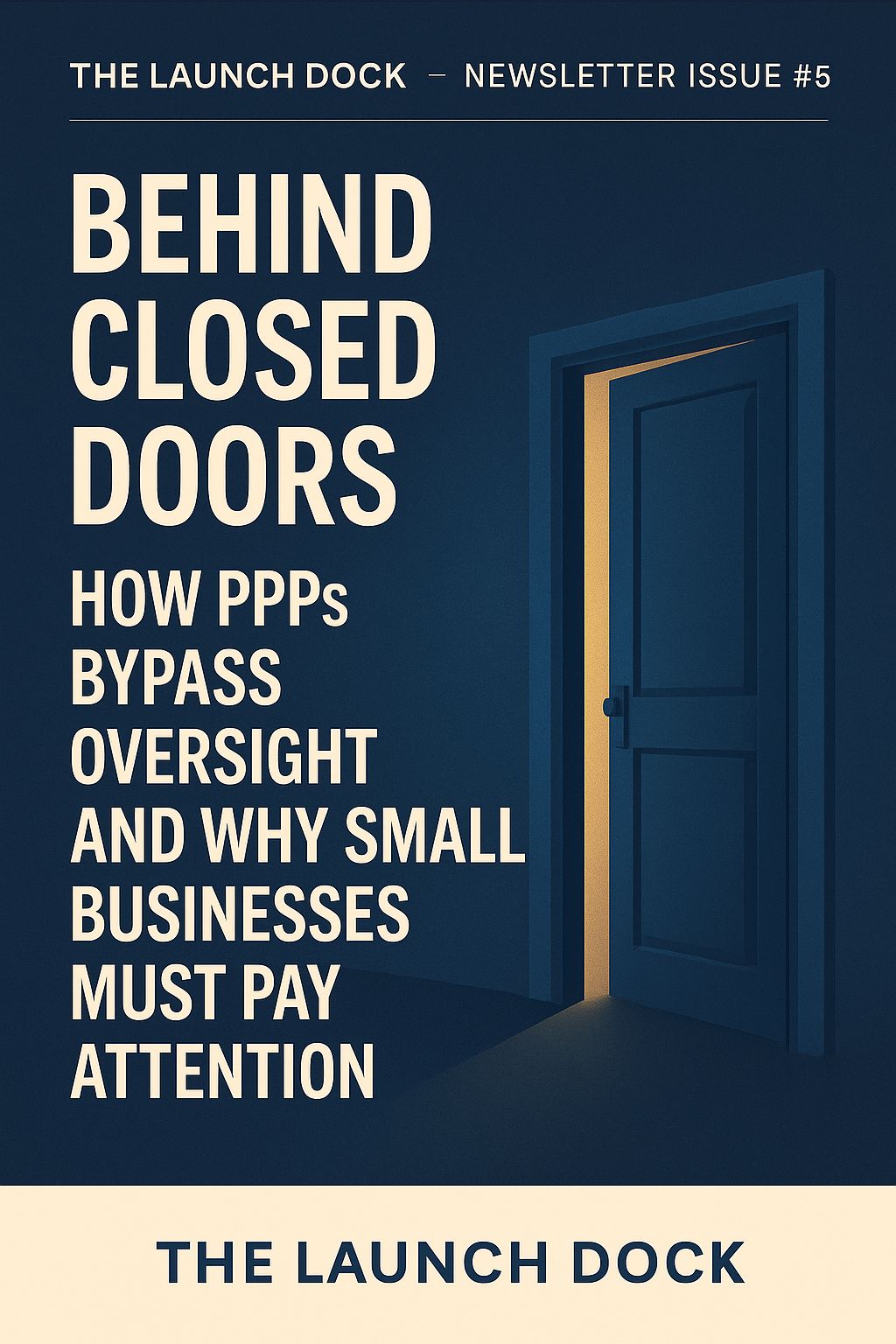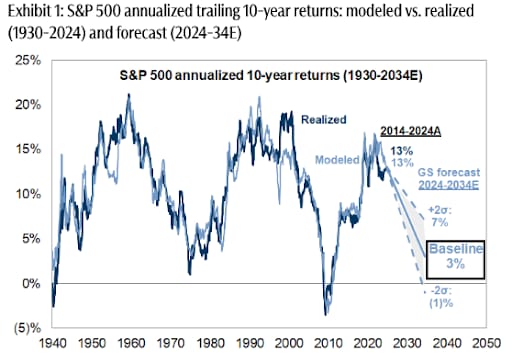- The Launch Dock
- Posts
- THE LAUNCH DOCK
THE LAUNCH DOCK
Behind Closed Doors: How PPPs Bypass Oversight

Merchant Ship Collective | The Launch Dock
“Where small businesses learn the truth about power, policy, and opportunities that actually matter.”
Why Small Businesses Must Pay Attention
One of the most dangerous misunderstandings about Public–Private Partnerships (PPPs) is the assumption that they are automatically transparent because government is involved. The truth is far more complicated — and far more important for small businesses to understand.
PPPs live in the gap between public accountability and private protection. That gap is where oversight disappears. And when oversight disappears, the people who suffer the most are not the corporations receiving the contracts — it’s the small businesses trying to compete with them.
This issue breaks down how PPPs slip past public scrutiny, why the public often loses access to critical information, and what that means for small businesses operating in markets they can’t fully see.
The Oversight Gap: How Private Partners Become Public Gatekeepers
In the U.S. system, public agencies are bound by open-records laws, public meetings, audit requirements, and citizen accountability. Private companies are bound by none of these. When a public function is turned over to a private partner, the transparency associated with public governance does not follow.
This means a PPP may run the systems that manage public data, distribute public funds, or control public programs — yet the public cannot access the internal mechanics of how decisions are made. Agencies often respond to transparency requests with a single sentence:
“We can’t release that. It belongs to our private partner.”
During COVID-19, this shift was accelerated on a national scale. Emergency contracting allowed agencies to skip traditional oversight, and many of the private vendors brought in under those conditions stayed long after the emergency ended. The Government Accountability Office documented widespread relaxation of competition and oversight requirements during the pandemic, some of which persist today (Government Accountability Office, 2021).
Why FOIA Stops at the PPP Doorway
The Freedom of Information Act (FOIA) was designed to ensure transparency in government. But FOIA applies only to the agency — not the private company performing the work. Once public operations move into a private system, the public loses visibility.
Even when a PPP manages public data or public dollars, the company’s internal processes remain protected as “proprietary.” Algorithms that score vendors, dashboards that inform policy, and internal audits that determine eligibility are all shielded from public review.
This creates a structural blind spot where decisions that affect an entire business landscape occur without the businesses themselves ever being able to see the criteria. For small vendors trying to compete, it becomes nearly impossible to understand why one proposal was accepted, another was denied, or how the weighting systems actually operate behind the scenes.
How PPP Oversight Loopholes Impact Small Businesses
For small businesses, the consequences are not theoretical. They show up in the form of rejected bids with no explanation, changing requirements that mirror a single vendor’s proprietary system, and algorithmic decisions that determine eligibility without revealing the underlying logic.
Without transparency, small businesses have no way to:
Verify the fairness of vendor scoring
Review evaluation notes
Compare pricing structures
Challenge conflicts of interest
Understand the data used to make decisions
Meanwhile, large corporations often have early access to system requirements, direct communication channels with agencies, and a degree of influence over system design that small businesses could never match.
This imbalance doesn’t violate any law — it simply exploits the way the law was written.
COVID-19: The Moment the Loophole Became the Standard
COVID-19 didn’t create this problem, but it multiplied it. During the pandemic, states and agencies built massive new systems for testing, tracking, reporting, and relief distribution. Most were built by private companies under emergency contracts.
According to the Department of Health and Human Services, many of those systems remain in private hands, managing public data without public oversight (United States Department of Health & Human Services, 2022). The dashboards, portals, and automated decision-making tools that guided pandemic response became permanent infrastructure. And because these tools are proprietary, small businesses and citizens cannot access the logic inside them.
This means critical systems — ones that determine how public dollars flow — are governed by private rules invisible to the people who rely on them.
The Path Forward for Small Businesses
The oversight problem is structural, but not unchangeable. Small businesses can begin reclaiming ground by paying attention to how local governments adopt new systems, asking who owns the tools they rely on, requesting public performance reports on vendor contracts, and advocating for safeguards that protect local vendors.
Even simple questions asked at public meetings — Who owns this system? What happens when the contract ends? How can small businesses gain access to the data that informs these decisions? — can open conversations that force agencies to rethink automatic renewals or begin unbundling contracts that have remained in private shadows for too long.
The goal isn’t to eliminate PPPs — it’s to ensure they don’t replace public accountability.
Call to Action
In the next issue of The Launch Dock, we’ll look at the industries most affected by PPP oversight gaps and break down real-world examples of how small businesses were pushed out of markets without ever understanding why.
This is the side of entrepreneurship most people never get to see — but the side every business owner deserves to understand.
In solidarity,
The Merchant Ship Collective
References
Government Accountability Office. (2021). COVID-19: Emergency contracting and the need for transparency. https://www.gao.gov
United States Department of Health & Human Services. (2022). Public health data infrastructure modernization update. https://www.hhs.gov
Wall Street Isn’t Warning You, But This Chart Might
Vanguard just projected public markets may return only 5% annually over the next decade. In a 2024 report, Goldman Sachs forecasted the S&P 500 may return just 3% annually for the same time frame—stats that put current valuations in the 7th percentile of history.
Translation? The gains we’ve seen over the past few years might not continue for quite a while.
Meanwhile, another asset class—almost entirely uncorrelated to the S&P 500 historically—has overall outpaced it for decades (1995-2024), according to Masterworks data.
Masterworks lets everyday investors invest in shares of multimillion-dollar artworks by legends like Banksy, Basquiat, and Picasso.
And they’re not just buying. They’re exiting—with net annualized returns like 17.6%, 17.8%, and 21.5% among their 23 sales.*
Wall Street won’t talk about this. But the wealthy already are. Shares in new offerings can sell quickly but…
*Past performance is not indicative of future returns. Important Reg A disclosures: masterworks.com/cd.
